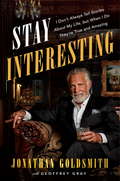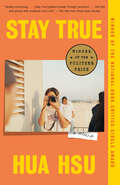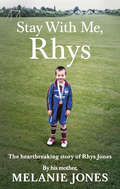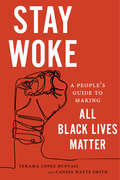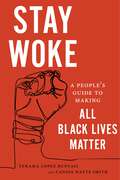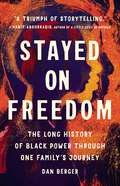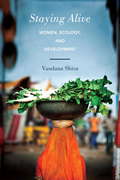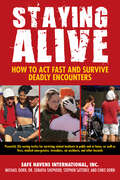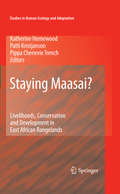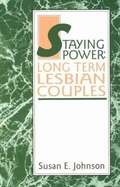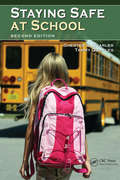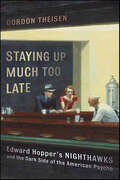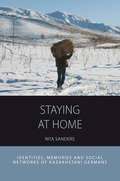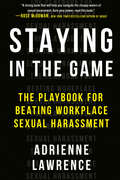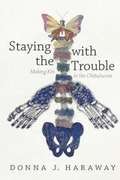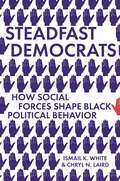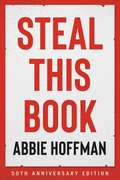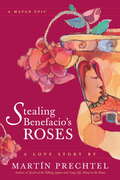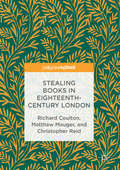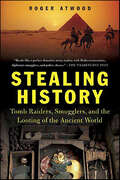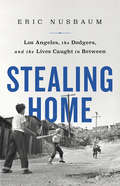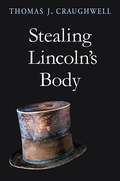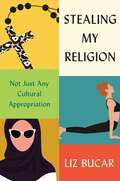- Table View
- List View
Stay Home: Housing and Home in the UK during the COVID-19 Pandemic
by Becky TunstallThe UK housing system has been described as being in ‘crisis’, but suddenly in 2020 homes were on the COVID-19 frontline, used for shielding, isolating and care. Most were used by more people, for more hours, for more activities. Many households were cut off from normal services and contacts, and many lost the means to pay for their homes. Millions of infections occurred at home, and inequalities in household type, housing space, cost and tenure contributed to the unequal impact of the pandemic. This book brings together a wealth of data, individual testimony and analysis, in one convenient resource for students, scholars and practitioners.
Stay Interesting: I Don't Always Tell Stories About My Life, but When I Do They're True and Amazing
by Jonathan GoldsmithWhat makes a life truly interesting? Is it the people you meet? The risks you take? The adventures you remember?Jonathan Goldsmith has many answers to that question. For years he was a struggling actor in New York and Los Angeles, with experiences that included competing for roles with Dustin Hoffman, getting shot by John Wayne, drinking with Tennessee Williams, and sailing the high seas with Fernando Lamas, never mind romancing many lovely ladies along the way.However, it wasn’t all fun and games for Jonathan. Frustrated with his career, he left Hollywood for other adventures in business and life. But then, a fascinating opportunity came his way—a chance to star in a new campaign for Dos Equis beer. A role he was sure he wasn’t right for, but he gave it a shot all the same. Which led to the role that would bring him the success that had so long eluded him—that of “The Most Interesting Man in the World.”A memoir told through a series of adventures and the lessons he’s learned and wants to pass on, Stay Interesting is a truly daring and bold tale, and a manifesto about taking chances, not giving up, making courageous choices, and living a truly adventurous, and always interesting life.
Stay True: A Memoir (Pulitzer Prize Winner)
by Hua HsuPULITZER PRIZE WINNER • NEW YORK TIMES BESTSELLER • A gripping memoir on friendship, grief, the search for self, and the solace that can be found through art, by the New Yorker staff writer Hua Hsu&“This book is exquisite and excruciating and I will be thinking about it for years and years to come.&” —Rachel Kushner, New York Times bestselling author of The Flamethrowers and The Mars RoomIn the eyes of eighteen-year-old Hua Hsu, the problem with Ken—with his passion for Dave Matthews, Abercrombie & Fitch, and his fraternity—is that he is exactly like everyone else. Ken, whose Japanese American family has been in the United States for generations, is mainstream; for Hua, the son of Taiwanese immigrants, who makes &’zines and haunts Bay Area record shops, Ken represents all that he defines himself in opposition to. The only thing Hua and Ken have in common is that, however they engage with it, American culture doesn&’t seem to have a place for either of them.But despite his first impressions, Hua and Ken become friends, a friendship built on late-night conversations over cigarettes, long drives along the California coast, and the successes and humiliations of everyday college life. And then violently, senselessly, Ken is gone, killed in a carjacking, not even three years after the day they first meet.Determined to hold on to all that was left of one of his closest friends—his memories—Hua turned to writing. Stay True is the book he&’s been working on ever since. A coming-of-age story that details both the ordinary and extraordinary, Stay True is a bracing memoir about growing up, and about moving through the world in search of meaning and belonging.
Stay With Me, Rhys: The Heartbreaking Story Of Rhys Jones, By His Mother. As Seen On Itv's New Documentary Police Tapes
by Melanie JonesStay Woke: A People's Guide to Making All Black Lives Matter
by Candis Watts Smith Tehama Lopez BunyasiThe essential guide to understanding how racism works and how racial inequality shapes black lives, ultimately offering a road-map for resistance for racial justice advocates and antiracists When #BlackLivesMatter went viral in 2013, it shed a light on the urgent, daily struggles of black Americans to combat racial injustice. The message resonated with millions across the country. Yet many of our political, social, and economic institutions are still embedded with racist policies and practices that devalue black lives. Stay Woke directly addresses these stark injustices and builds on the lessons of racial inequality and intersectionality the Black Lives Matter movement has challenged its fellow citizens to learn.In this essential primer, Tehama Lopez Bunyasi and Candis Watts Smith inspire readers to address the pressing issues of racial inequality, and provide a basic toolkit that will equip readers to become knowledgeable participants in public debate, activism, and politics. This book offers a clear vision of a racially just society, and shows just how far we still need to go to achieve this reality. From activists to students to the average citizen, Stay Woke empowers all readers to work toward a better future for black Americans.
Stay Woke: A People's Guide to Making All Black Lives Matter
by Candis Watts Smith Tehama Lopez BunyasiThe essential guide to understanding how racism and racial inequality shapes black lives—and a road-map for resistance for racial justice advocates. "[Stay Woke] will prove useful to anyone interested in seeing America strive to live up to its purported values of equality, liberty, and justice. . . . Refreshingly direct, comprehensive, inspirational, and unapologetically antiracist." ―Political Science Quarterly When #BlackLivesMatter went viral in 2013, it shed a light on the urgent, daily struggles of black Americans to combat racial injustice. The message resonated with millions across the country. Yet many of our political, social, and economic institutions are still embedded with racist policies and practices that devalue black lives. Stay Woke directly addresses these stark injustices and builds on the lessons of racial inequality and intersectionality the Black Lives Matter movement has challenged its fellow citizens to learn. In this essential primer, university professors Tehama Lopez Bunyasi and Candis Watts Smith inspire readers to address the pressing issues of racial inequality, and provide a basic toolkit that will equip readers to become knowledgeable participants in public debate, activism, and politics. This book offers a clear vision of a racially just society, and shows just how far we still need to go to achieve this reality. From activists to students to the average citizen, Stay Woke empowers all readers to work toward a better future for black Americans. "Lays bare the common sense assumptions that both sustain and obscure racism. Makes it impossible for anyone to sleep on 'Black Lives Matter' and the ongoing struggle to end racism as we know
Stayed On Freedom: The Long History of Black Power through One Family's Journey
by Dan BergerA new history of Black Liberation, told through the intertwined story of two grassroots organizers The Black Power movement, often associated with its iconic spokesmen, derived much of its energy from the work of people whose stories have never been told. Stayed On Freedom brings into focus two unheralded Black Power activists who dedicated their lives to the fight for freedom. Zoharah Simmons and Michael Simmons fell in love while organizing tenants and workers in the South. Their commitment to each other and to social change took them on a decades-long journey that traversed first the country and then the world. In centering their lives, historian Dan Berger shows how Black Power united the local and the global across organizations and generations. Based on hundreds of hours of interviews, Stayed On Freedom is a moving and intimate portrait of two people trying to make a life while working to make a better world.
Staying Alive
by Vandana ShivaInspired by women's struggles for the protection of nature as a condition for human survival, award-winning environmentalist Vandana Shiva shows how ecological destruction and the marginalization of women are not inevitable, economically or scientifically. She argues that "maldevelopment"--the violation of the integrity of organic, interconnected, and interdependent systems that sets in motion a process of exploitation, inequality, and injustice--is dragging the world down a path of self-destruction, threatening survival itself. Shiva articulates how rural Indian women experience and perceive ecological destruction and its causes, and how they have conceived and initiated processes to arrest the destruction of nature and begin its regeneration. Focusing on science and development as patriarchal projects, Staying Alive is a powerfully relevant book that positions women not solely as survivors of the crisis, but as the source of crucial insights and visions to guide our struggle.From the Trade Paperback edition.
Staying Alive: How to Act Fast and Survive Deadly Encounters
by Safe Havens International Inc Michael Dorn Sonayia Shepherd Steve Satterly Chris DornThe Boston Marathon; Sandy Hook Elementary School; the Aurora, Colorado movie theater; Columbine High School—sadly, most Americans are very familiar with these names and the tragic events that took place at each event or location. Mass shootings, home invasions, and other attacks on the general public are no longer the rare exception they were decades ago. No one wants to feel like a potential victim in their own neighborhood, but what can the average person do to stay safe?The authors of Staying Alive: How to Act Fast and Survive Deadly Encounters give us the answer to that question. Inside, they take the successful strategies that have been used to avert planned school shootings, bombings, and other deadly events and demonstrate how those techniques can be utilized by the average person. The powerful and potentially life-saving information in this book includes:An honest look at the myths and truths surrounding mass casualty eventsProven strategies for surviving violent incidents in malls, movie theaters, places of worship, and at homeSafety concepts that can be applied to fires, medical emergencies, tornadoes, car accidents, and other hazardsWith an in-depth look at mass casualty attacks across the centuries—including the earliest recorded incident in 1764 in Western Pennsylvania, a vivid review of case studies to help readers fine tune how they prepare for life and death situations, techniques for improving crisis response, and much more, Staying Alive offers everything the average person needs to know in order respond to, and recover from, a crisis. An ideal reference for school teachers, parents, security personnel, and all others responsible for the care and safety of others.
Staying Maasai?
by P. Trench Patti Kristjanson Katherine HomewoodThe area of eastern Africa, which includes Tanzania and Kenya, is known for its savannas, wildlife and tribal peoples. Alongside these iconic images lie concerns about environmental degradation, declining wildlife populations, and about worsening poverty of pastoral peoples. East Africa presents in microcosm the paradox so widely seen across sub Saharan Africa, where the world's poorest and most vulnerable populations live alongside some of the world's most outstanding biodiversity resources. Over the last decade or so, community conservation has emerged as a way out of poverty and environmental problems for these rural populations, focusing on the sustainable use of wildlife to generate income that could underpin equally sustainable development. Given the enduring interest in East African wildlife, and the very large tourist income it generates, these communities and ecosystems seem a natural case for green development based on community conservation. This volume is focused on the livelihoods of the Maasai in two different countries - Kenya and Tanzania. This cross-border comparative analysis looks at what people do, why they choose to do it, with what success and with what implications for wildlife. The comparative approach makes it possible to unpack the interaction of conservation and development, to identify the main drivers of livelihoods change and the main outcomes of wildlife conservation or other land use policies, while controlling for confounding factors in these semi-arid and perennially variable systems. This synthesis draws out lessons about the successes and failures of community conservation-based approach to development in Maasailand under different national political and economic contexts and different local social and historical particularities.
Staying Power: Long Term Lesbian Couples
by Susan E. JohnsonThis is the report of the first nation-wide study on long-term lesbian relationships. It includes interviews with couples, analyses, and what can be learned from these women.
Staying Safe at School
by W.H.C. Bassetti Chester L. Quarles Tammy F. QuarlesThis is a practical and comprehensive guide to all aspects of writing about science and technology, including both `how to write' and the practical and commercial aspects of publishing as they affect an author. Special features of technical writing are discussed in detail. It also gives special attention to problems facing writers of instruction ma
Staying Up Much Too Late: Edward Hopper's Nighthawks and the Dark Side of the American Psyche
by Gordon TheisenA fascinating study of Edward Hopper's iconic Nighthawks painting and its deep significance for understanding American culture.Staying up Much Too Late discusses the painting Nighthawks and the painter Edward Hopper and their central importance to twentieth-century American culture. Topics include individualism, New York City, Arthur "Weegee" Fellig, diners, pornography, capitalism, advertising, cigarettes, American philosophy, World War II, Gravity's Rainbow, Blade Runner, Pulp Fiction, Russ Meyer, R. Crumb, David Lynch, and film noirWhat links these together is the painting's pessimistic take on American culture, which it also seems to epitomize. Despite its desolate feel, Nighthawks has become a familiar icon, reproduced on posters and postcards, in movies and on television shows. But Nighthawks is more than just a masterful painting. It is a portal into that rarely acknowledged but pervasive dark side of the American psyche.
Staying at Home: Identities, Memories and Social Networks of Kazakhstani Germans
by Rita SandersDespite economic growth in Kazakhstan, more than 80 per cent of Kazakhstan's ethnic Germans have emigrated to Germany to date. Disappointing experiences of the migrants, along with other aspects of life in Germany, have been transmitted through transnational networks to ethnic Germans still living in Kazakhstan. Consequently, Germans in Kazakhstan today feel more alienated than ever from their 'historic homeland'. This book explores the interplay of those memories, social networks and state policies, which play a role in the 'construction' of a Kazakhstani German identity.
Staying in the Game: The Playbook for Beating Workplace Sexual Harassment
by Adrienne LawrenceA practical guide to shutting down workplace sexual harassment so it doesn't derail your career or your life, from the first on-air personality to sue ESPN for sexual harassment."A strong book that will help you navigate the choppy waters of sexual harassment. Gain your power, read this book."-Rose McGowan, New York Times bestselling author of BraveEven in the #MeToo era, studies show that women in the workforce continue to harbor misconceptions about sexual harassment and are unprepared to respond when it happens. Lawyer and former ESPN anchor Adrienne Lawrence has learned to advocate for herself and other women. In this book, she offers much-needed insight on topics such as: • Identifying the five types of harassers and the five types of coworkers who enable them • Researching company culture and history to identify sexual harassment hotbeds • Properly documenting inappropriate behavior • Preparing for retaliation and mental health hurdles such as anxiety and depression • Managing public exposure and figuring out when to leverage the power of the media and/or lawyer upThis essential guide helps women navigate the complicated realities of sexual harassment and teaches them how to be their own best advocates in toxic work environments.
Staying with the Trouble: Making Kin in the Chthulucene
by Donna J. HarawayIn the midst of spiraling ecological devastation, multispecies feminist theorist Donna J. Haraway offers provocative new ways to reconfigure our relations to the earth and all its inhabitants. She eschews referring to our current epoch as the Anthropocene, preferring to conceptualize it as what she calls the Chthulucene, as it more aptly and fully describes our epoch as one in which the human and nonhuman are inextricably linked in tentacular practices. The Chthulucene, Haraway explains, requires sym-poiesis, or making-with, rather than auto-poiesis, or self-making. Learning to stay with the trouble of living and dying together on a damaged earth will prove more conducive to the kind of thinking that would provide the means to building more livable futures. Theoretically and methodologically driven by the signifier SF--string figures, science fact, science fiction, speculative feminism, speculative fabulation, so far--Staying with the Trouble further cements Haraway's reputation as one of the most daring and original thinkers of our time.
Steadfast Democrats: How Social Forces Shape Black Political Behavior (Princeton Studies in Political Behavior #19)
by Ismail K. White Chryl N. LairdA groundbreaking look at how group expectations unify black Americans in their support of the Democratic partyBlack Americans are by far the most unified racial group in American electoral politics, with 80 to 90 percent identifying as Democrats—a surprising figure given that nearly a third now also identify as ideologically conservative, up from less than 10 percent in the 1970s. Why has ideological change failed to push more black Americans into the Republican Party? Steadfast Democrats answers this question with a pathbreaking new theory that foregrounds the specificity of the black American experience and illuminates social pressure as the key element of black Americans’ unwavering support for the Democratic Party.Ismail White and Chryl Laird argue that the roots of black political unity were established through the adversities of slavery and segregation, when black Americans forged uniquely strong social bonds for survival and resistance. White and Laird explain how these tight communities have continued to produce and enforce political norms—including Democratic Party identification in the post–Civil Rights era. The social experience of race for black Americans is thus fundamental to their political choices. Black voters are uniquely influenced by the social expectations of other black Americans to prioritize the group’s ongoing struggle for freedom and equality. When navigating the choice of supporting a political party, this social expectation translates into affiliation with the Democratic Party. Through fresh analysis of survey data and original experiments, White and Laird explore where and how black political norms are enforced, what this means for the future of black politics, and how this framework can be used to understand the electoral behavior of other communities.An innovative explanation for why black Americans continue in political lockstep, Steadfast Democrats sheds light on the motivations consolidating an influential portion of the American electoral population.
Steal This Book
by Abbie HoffmanStill Notorious, Radical, and Revolutionary 50 Years Later.A survival guide from one of the greatest creative organizers of the 20th century—now with a new foreword by co-conspirator, Lisa Fithian. Throughout the 1960's and 70's, Abbie Hoffman criss-crossed the country, ferreting out alternative ways of getting by in America—some illegal and all radical. Causing scandals with its advice on how to Survive!, Fight!, and Liberate! in the &“prison that is Amerika,&” Steal This Book is a revolutionary's manual to running a guerilla movement, as well as getting free food, housing, transportation, medical care, and more. This anniversary edition gives a new generation an insider's view into the movements of the sixties and seventies. While many of the holes in the system that Abbie exposed have since been plugged, the spirit of revolution, the dedication to opposing injustice, and the passion of creative activism continue to inspire today.
Stealing Benefacio's Roses
by Martin PrechtelFollowing the acclaimed Secrets of The Talking Jaguar and Long Life, Honey in the Heart, this is an expansive, lyrical novel in the tradition of indigenous oral storytelling. Based on the author's many years of living in a Guatemalan village, Stealing Benefacio's Roses interweaves dramatic recountings of village life and the political horrors of civil war with lyric retellings of sacred Mayan myths. The story shifts expertly from timeless, with archetypal characters like Raggedy Boy and the goddess known as the Water-Skirted Beauty, to timely in the book's striking first-person narrative set in the 1980s. Prechtel shows how ancient myths can become a part of life for everyone and help nurture spiritual survival in the modern world. Though it comes third in sequence with the author's other two books, Stealing Benefacio's Roses also stands on its own as a classic work of spiritual seeking and adventure.
Stealing Books in Eighteenth-Century London
by Christopher Reid Richard Coulton Matthew MaugerThis study offers an authoritative and readable account of the hidden history of book theft in eighteenth-century London. It exploits a rich primary source, the compelling narratives of crime contained in the digitised Proceedings of the Old Bailey. The authors explain how cases of book theft came to court, and how in the ensuing trials the nature of the book itself became a question for legal debate. They assess the motives which led Londoners to steal books and the methods they employed in thefts from households and booksellers. Finally, the authors ask what the Proceedings tells us about the social ownership of books, and how the phenomenon of book theft differently affected book producers and consumers. Stealing Books in Eighteenth-Century London will appeal to readers interested in the connected histories of metropolitan life, crime, and the book in this period, and in the uses of digital resources in humanities research.
Stealing Green Mangoes: Two Brothers, Two Fates, One Indian Childhood
by Sunil Dutta“The poignant memoir of two brothers raised under the dark shadow of Indian Partition” before one becomes a Los Angeles cop and the other a terrorist (Kirkus Reviews, starred review)Sunil Dutta is a twenty-year veteran of the LAPD. He was also a biologist and a translator of classic Indian poetry. But before that, he was a refugee of the genocidal violence that followed the Partition of India. While Sunil eventually escaped to a new life, his brother Raju took a different path. Raju was arrested, fled the law, and became a fugitive. Then he became a terrorist. Later in life, facing Stage IV lung cancer, Sunil tried to understand how he and his brother found themselves on such radically different paths. In Stealing Green Mangoes, Dutta takes us from his childhood home in Rajasthan to the streets of southeastern Los Angeles, attempting to uncover what it was that tore him and Raju apart.A memoir with sweeping, spiritual ambitions, Stealing Green Mangoes asks probing questions about surviving trauma, crossing borders, and how we become who we are.
Stealing History: Tomb Raiders, Smugglers, and the Looting of the Ancient World
by Roger AtwoodRoger Atwood knows more about the market for ancient objects than almost anyone. He knows where priceless antiquities are buried, who is digging them up, and who is fencing and buying them. In this fascinating book, Atwood takes readers on a journey through Iraq, Peru, Hong Kong, and across America, showing how the worldwide antiquities trade is destroying what's left of the ancient sites before archaeologists can reach them, and thus erasing their historical significance. And it is getting worse. The discovery of the legendary Royal Tombs of Sipan in Peru started an epidemic. Grave robbers scouring the courntryside for tombs--and finding them. Atwood recounts the incredible story of the biggest piece of gold ever found in the Americas, a 2,000-year-old, three-pound masterpiece that cost one looter his life, sent two smugglers to jail, and wrecked lives from Panama to Pennsylvainia. Packed with true stories, this book not only reveals what has been found, but at what cost to both human life and history.
Stealing Home: Los Angeles, the Dodgers, and the Lives Caught in Between
by Eric NusbaumA story about baseball, family, the American Dream, and the fight to turn Los Angeles into a big league city.Dodger Stadium is an American icon. But the story of how it came to be goes far beyond baseball. The hills that cradle the stadium were once home to three vibrant Mexican American communities. In the early 1950s, those communities were condemned to make way for a utopian public housing project. Then, in a remarkable turn, public housing in the city was defeated amidst a Red Scare conspiracy.Instead of getting their homes back, the remaining residents saw the city sell their land to Walter O'Malley, the owner of the Brooklyn Dodgers. Now LA would be getting a different sort of utopian fantasy -- a glittering, ultra-modern stadium.But before Dodger Stadium could be built, the city would have to face down the neighborhood's families -- including one, the Aréchigas, who refused to yield their home. The ensuing confrontation captivated the nation - and the divisive outcome still echoes through Los Angeles today.
Stealing Lincoln's Body
by Thomas J. CraughwellOn the night of the presidential election in 1876, a gang of counterfeiters out of Chicago attempted to steal the entombed embalmed body of Abraham Lincoln and hold it for ransom. The custodian of the tomb was so shaken by the incident that he willingly dedicated the rest of his life to protecting the president's corpse. In a lively and dramatic narrative, Thomas J. Craughwell returns to this bizarre, and largely forgotten, event with the first book to place the grave robbery in historical context. He takes us through the planning and execution of the crime and the outcome of the investigation. He describes the reactions of Mary Todd Lincoln and Robert Todd Lincoln to the theft―and the peculiar silence of a nation. He follows the unlikely tale of what happened to Lincoln's remains after the attempted robbery, and details the plan devised by the Lincoln Guard of Honor to prevent a similar abominable recurrence. Along the way, Craughwell offers entertaining sidelights on the rise of counterfeiting in America and the establishment of the Secret Service to combat it; the prevalence of grave robberies; the art of nineteenth-century embalming; and the emergence among Irish immigrants of an ambitious middle class―and a criminal underclass. This rousing story of hapless con men, intrepid federal agents, and ordinary Springfield citizens who honored their native son by keeping a valuable, burdensome secret for decades offers a riveting glimpse into late-nineteenth-century America, and underscores that truth really is sometimes stranger than fiction.
Stealing My Religion: Not Just Any Cultural Appropriation
by Liz BucarFrom sneaker ads and the “solidarity hijab” to yoga classes and secular hikes along the Camino de Santiago pilgrimage route, the essential guide to the murky ethics of religious appropriation.We think we know cultural appropriation when we see it. Blackface or Native American headdresses as Halloween costumes—these clearly give offense. But what about Cardi B posing as the Hindu goddess Durga in a Reebok ad, AA’s twelve-step invocation of God, or the earnest namaste you utter at the end of yoga class?Liz Bucar unpacks the ethical dilemmas of a messy form of cultural appropriation: the borrowing of religious doctrines, rituals, and dress for political, economic, and therapeutic reasons. Does borrowing from another’s religion harm believers? Who can consent to such borrowings? Bucar sees religion as an especially vexing arena for appropriation debates because faiths overlap and imitate each other and because diversity within religious groups scrambles our sense of who is an insider and who is not. Indeed, if we are to understand why some appropriations are insulting and others benign, we have to ask difficult philosophical questions about what religions really are.Stealing My Religion guides us through three revealing case studies—the hijab as a feminist signal of Muslim allyship, a study abroad “pilgrimage” on the Camino de Santiago, and the commodification of yoga in the West. We see why the Vatican can’t grant Rihanna permission to dress up as the pope, yet it’s still okay to roll out our yoga mats. Reflecting on her own missteps, Bucar comes to a surprising conclusion: the way to avoid religious appropriation isn’t to borrow less but to borrow more—to become deeply invested in learning the roots and diverse meanings of our enthusiasms.

